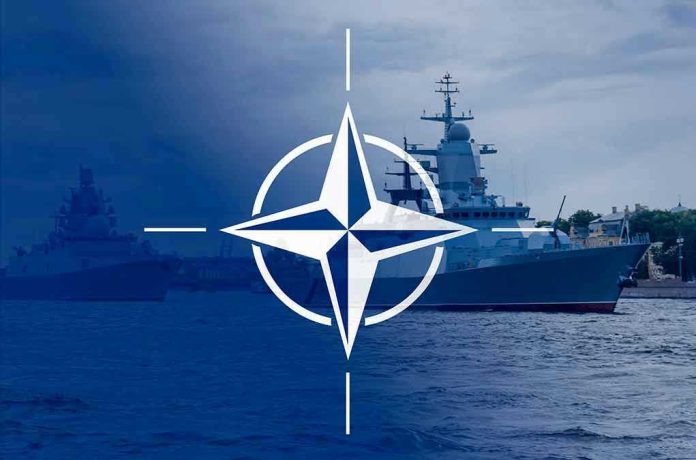
Russian warplanes carrying supersonic missiles were intercepted over the Baltic, highlighting escalating tensions and the strategic chess game in the region.
Story Highlights
- Swedish Air Force intercepts Russian Su-30s over the Baltic Sea.
- Russian aircraft were armed with KH-31 supersonic missiles.
- NATO’s Quick Reaction Alert was triggered, demonstrating rapid response.
- The incident underscores ongoing NATO-Russia tensions in the region.
Escalating Aerial Tensions Over the Baltic
On September 14, 2025, Swedish Air Force JAS-39 Gripen fighters intercepted two Russian Su-30 aircraft armed with KH-31 supersonic anti-radiation missiles and an Il-20 intelligence aircraft. The Russian jets flew near Sweden’s air defense zone, prompting a NATO Quick Reaction Alert (QRA) response. This incident marks a significant escalation in the already tense military standoff between NATO and Russia, showcasing NATO’s commitment to defending allied airspace while highlighting Russian efforts to gather intelligence and signal deterrence.
The interception aligns with NATO’s increased air defense activities following Sweden’s accession to the alliance in March 2024. This region has long been a focal point for tensions, particularly since Russia’s annexation of Crimea in 2014 and the ongoing conflict in Ukraine. The Baltic Sea’s strategic importance as a corridor for military and intelligence operations means such encounters are becoming more frequent, with Russian aircraft often operating with transponders off to avoid detection.
NATO’s Strong Response Strategy
NATO’s swift response to the Russian aircraft highlights the organization’s robust air defense posture. The operation was a coordinated effort involving Swedish Gripens and other allied air defense assets under NATO’s QRA procedures. The incident underscores the effectiveness of NATO’s multinational coordination, which aims to deter Russian provocations and protect allied airspace. As tensions remain high, the region sees increased deployments from NATO members, such as the UK, France, Germany, and Denmark, bolstering the eastern flank’s defenses.
The deployment of KH-31 missiles by Russian aircraft is interpreted by defense analysts as a deliberate show of force, indicating Russia’s readiness to escalate if necessary. This maneuver is seen as both an intelligence-gathering exercise and a test of NATO’s air defense capabilities. Despite the potential for miscalculation, NATO’s controlled and measured reaction reflects a commitment to maintaining regional stability and deterrence without escalating tensions further.
Potential Implications and Future Outlook
In the short term, the interception has heightened the alert status of NATO’s air defenses, increasing the frequency of intercept missions and the potential for miscalculations or escalation. Long-term implications may include sustained military tension in the Baltic, further militarization, and possible adjustments in NATO’s air defense doctrine. The incident also pressures governments to prioritize national security and alliance solidarity, potentially leading to increased defense spending and resource allocation.
The ongoing situation in the Baltic will likely continue to influence NATO and Russian military strategies. For NATO, maintaining transparency and restraint while showcasing its rapid response capabilities is crucial. Meanwhile, Russia’s actions signal its intent to challenge NATO’s readiness, using advanced weaponry and reconnaissance platforms to test allied defenses continually.
Sources:
Swedish Gripens Intercept Russian Jets Armed with Anti-radiation Missiles Over Baltic
Swedish Gripen Fight Jets Intercepted Russian Su-30 Aircraft Carrying Supersonic Missiles
NATO Scrambles First Fighter Mission in Response to Operation Russian Drone Threat













